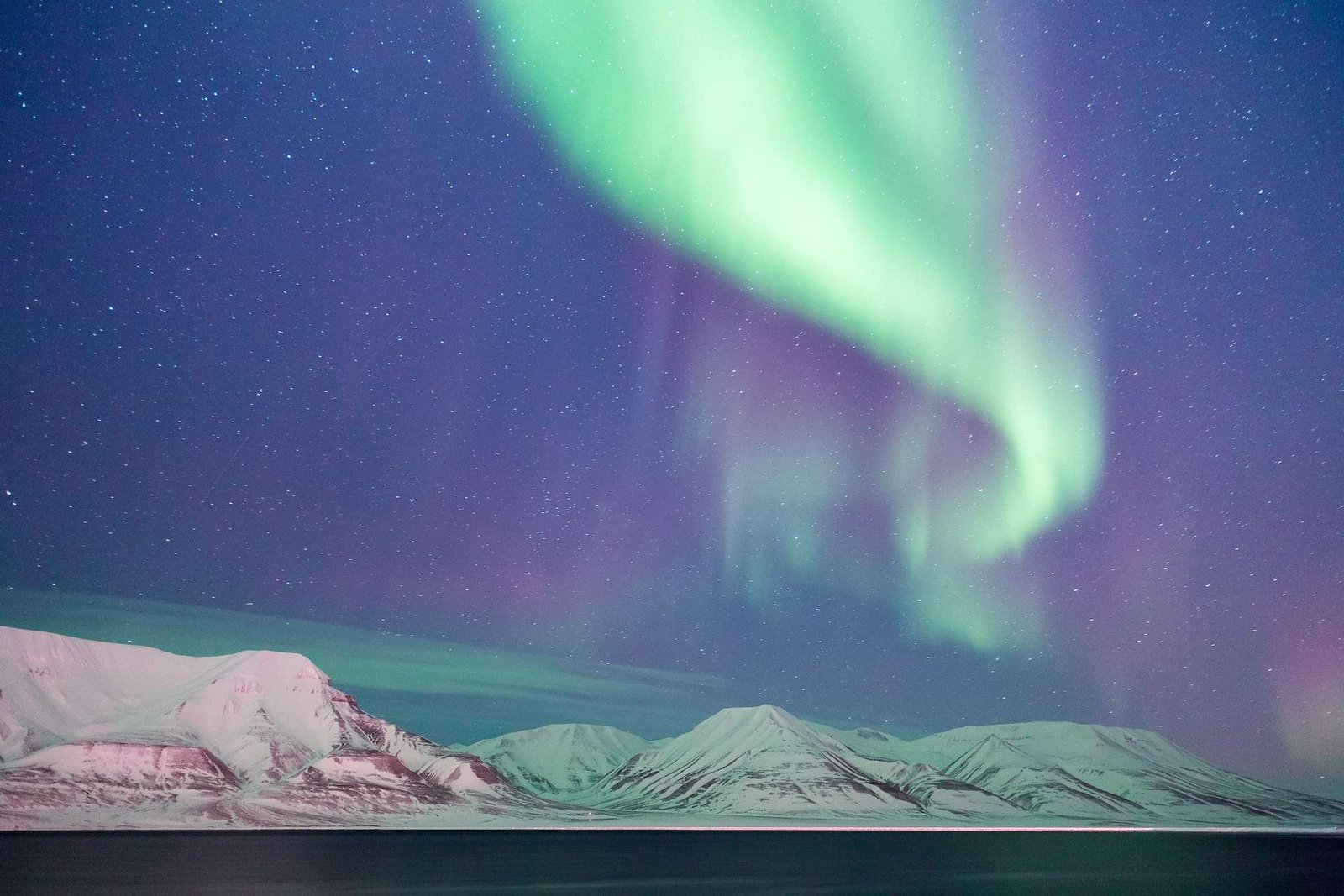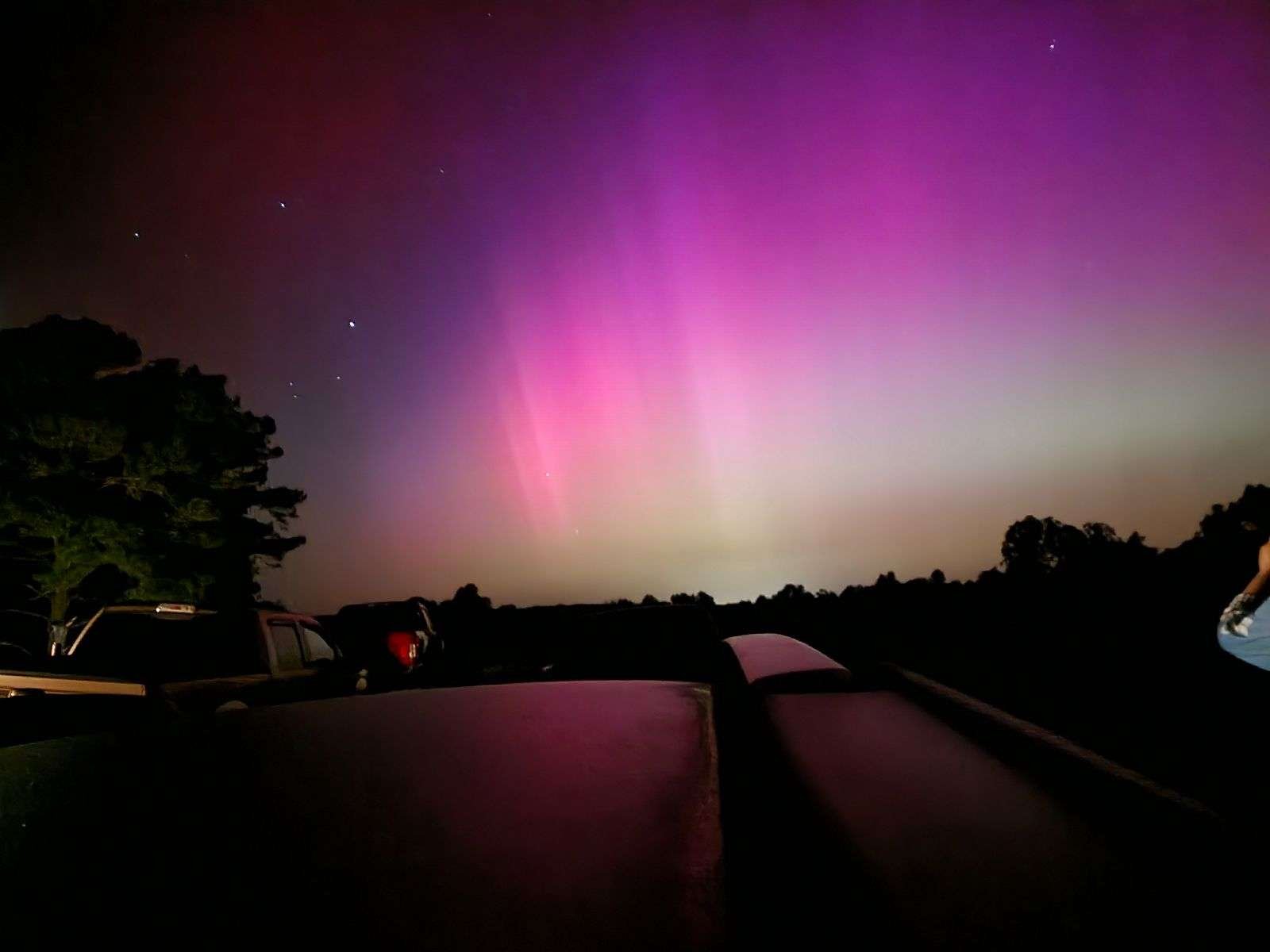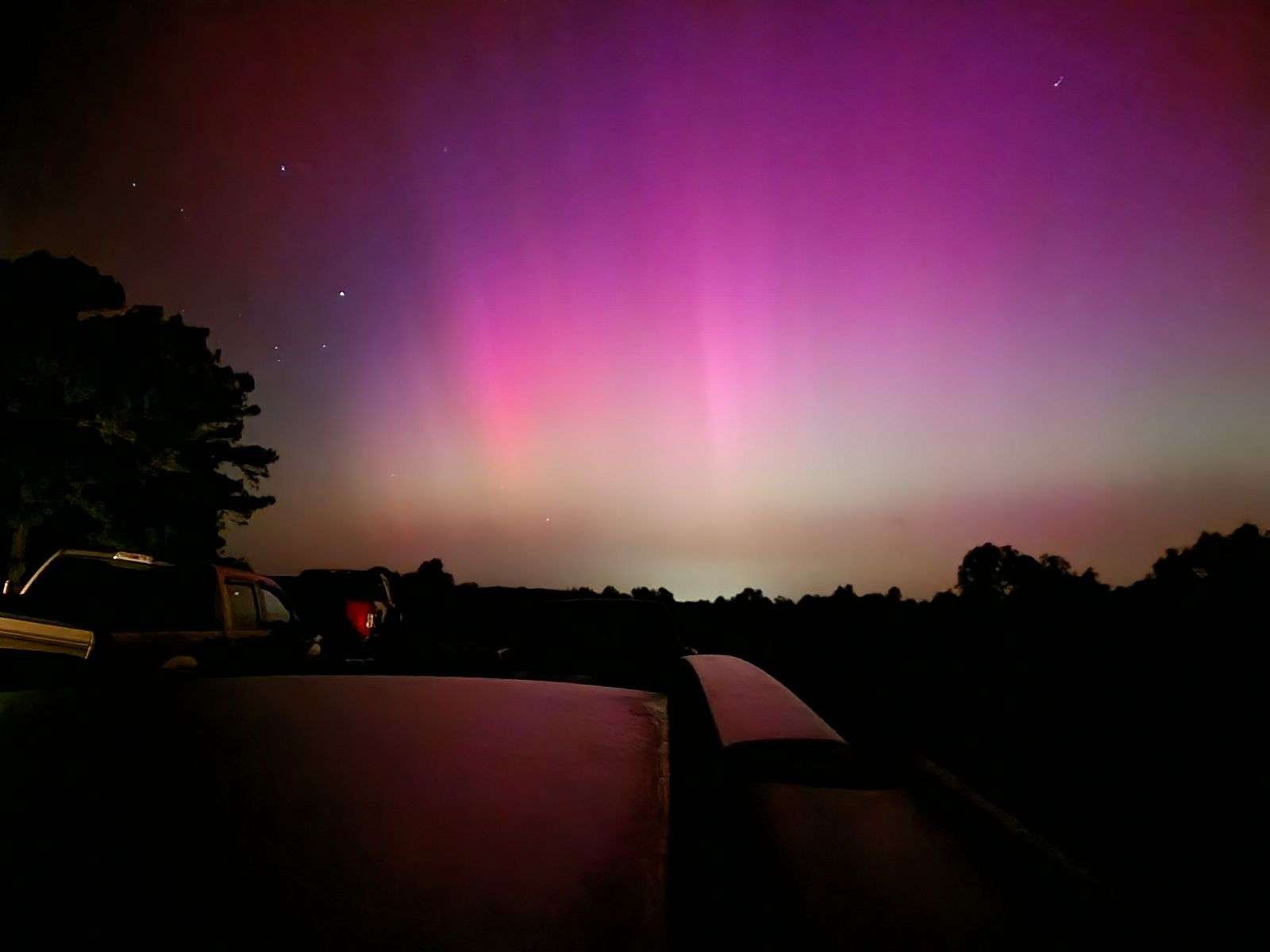Introduction to the Northern Lights (Aurora Borealis)
Have you ever dreamed of witnessing the mesmerizing dance of the Northern Lights (also known as the Aurora Borealis)? Well, buckle up, because I’m about to take you on an incredible journey to the unexpected sighting of the Northern Lights in Lower Alabama, where the enchanting aurora borealis was seen in all its glory.
The Northern Lights are one of nature’s most breathtaking light shows, a dazzling display of vibrant colors that paint the night sky. These ethereal ribbons of light have captivated the human imagination for centuries, inspiring myths, legends, and a deep sense of wonder. And now, I’m thrilled to share with you that if you were outside last Friday night, they were visible for all to see. I didn’t have to venture to the far-flung corners of the Arctic to witness this natural phenomenon – it saw it right here in the heart of the Deep South.
What causes the Northern Lights?
The Northern Lights are the result of a complex interplay between the Earth’s magnetic field and charged particles from the sun. These particles, known as solar wind, are constantly streaming from the sun and interact with the Earth’s atmosphere, causing the gas molecules to emit colorful light.
As the solar wind collides with the Earth’s magnetic field, it creates a stunning light show that can be seen in the night sky. The colors of the Northern Lights are determined by the type of gas molecules that are being excited by the solar particles. For example, oxygen molecules produce the familiar green and red hues, while nitrogen molecules create the more subtle blue and purple tones.
The science behind the mesmerizing colors
The science behind the Northern Lights is truly fascinating. The colors we see are the result of the solar particles colliding with different gas molecules in the Earth’s atmosphere. As the particles interact with the gas molecules, they excite the electrons within the atoms, causing them to emit photons of light.
The specific colors we see depend on the type of gas molecule and the energy level of the excited electrons. For instance, oxygen molecules typically produce the vibrant green and red hues, while nitrogen molecules create the more subtle blue and purple tones. The intensity and patterns of the lights can also be influenced by factors such as the strength of the solar wind and the Earth’s magnetic field.

Image by Noel Bauza from Pixabay
Where can you see the Northern Lights?
The Northern Lights are typically associated with the far-northern regions of the globe, such as Alaska, Canada, Iceland, and Scandinavia. These areas are located within the “auroral oval,” a region around the Earth’s magnetic poles where the Northern Lights are most frequently observed. I grew up being taught and knowing that if I ever wanted to see them, I had to travel to where they were visible.
However, as I mentioned earlier, the enchanting aurora borealis was visible last Friday night over most of North America. Who would have thought it would show up in the unexpected location of Lower Alabama. This was due to the fact that there were unusual solar flares happening on the Sun and it produced this once in a lifetime experience for those fortunate to be out that night away from bright city lights. Earth’s magnetic field is constantly shifting and changing, and on rare occasions, the auroral oval can extend far enough south to include parts of the Deep South.
Chasing the Northern Lights in Lower Alabama
On the fateful night of May 10, 2024, I was on a campout on some remote farmland in the middle of nowhere with the men and boys of my church group. Nobody expected it. Nobody was looking for it to happen. We were having our camping fun that night and someone cried out, “Hey everybody! Come here. You have got to see this. It’s the northern lights.”
Most of us were sitting around a campfire roasting marshmallows with a grove of trees nearby. I was wondering what the boys were up to with such a story. We went over to where out vehicles were parked (which was far enough away from the light of the campfire and the lanterns to be able to see it with the naked eye.

The claim was true! I had the incredible opportunity to witness the Northern Lights in all their glory right here in Lower Alabama. It was a truly unforgettable experience that I will cherish for the rest of my life. At first, it was on the northern horizon, but as the minutes ticked by, the lights grew brighter and more vibrant, dancing and swirling across the sky in a mesmerizing display. It seemed to be moving south. I watched in awe as it moved nearer and nearer. The colors shifted from shimmering pinks to deep, fiery reds, all while the lights undulated and pulsed, as if alive and breathing. Soon, it was stretched above us.

None of us had expected this so no one had a tripod to steady our cameras. That’s why you see the roof of a car in some of the pictures. We used the car to steady the cameras.

It was an experience that was both humbling and exhilarating. To witness such a breathtaking natural phenomenon, right here in the heart of the Deep South, was truly a once-in-a-lifetime opportunity. I felt incredibly fortunate to have been in the right place at the right time, and to have had the chance to witness this incredible natural wonder with my own eyes. Even after my experience viewing this fantastic display of Mother Nature, I wanted to be sure. I checked the news and they verified the sighting.
Best time to have witnessed the Northern Lights in Lower Alabama was May 10, 2024
As I mentioned earlier, the best time to have witnessed the Northern Lights in Lower Alabama was on May 10, 2024. This was a particularly auspicious night for aurora borealis viewing, as a powerful solar storm had been brewing for several days, sending a massive surge of charged particles hurtling towards the Earth.
The increased solar activity created a perfect storm of conditions for an epic Northern Lights display, and sure enough, the skies over Lower Alabama came alive with a dazzling show of light and color. The auroral activity was so intense that I hear it was visible even in the panhandle of Florida, with the lights stretching across the northern horizon in a breathtaking arc.
I was fortunate enough to be out that night on the campout, cell phone in hand, able to capture the magic as it unfolded. And let me tell you, it was an unforgettable experience. The colors were so vivid and the movements so mesmerizing that it felt like I was witnessing a celestial dance, a symphony of light and energy playing out before my eyes.
Tips for capturing the Northern Lights on camera
Capturing the Northern Lights on camera can be a bit of a challenge, but with the right techniques and equipment, you can create stunning, breathtaking images that do justice to the natural wonder of the aurora borealis.
Here are a few tips to help you get the most out of your Northern Lights photography:
- Use a DSLR camera: A high-quality DSLR camera with manual controls is essential for capturing the Northern Lights. This will allow you to adjust the shutter speed, aperture, and ISO to get the perfect exposure. Some cell phones come with a ‘pro’ mode on their cameras. You can manipulate the same type settings as on the DSLR cameras.
- Invest in a sturdy tripod: The Northern Lights are constantly moving and changing, so you’ll need a stable platform to keep your camera steady and prevent blurry shots. The aperture has to be open for 6-8 seconds and any movement will blur your picture. When tripods are not available (such as on a campout), use the roof of your car, a fence post, a rock or something sturdy to rest your camera on.
- Shoot in RAW format: Shooting in RAW format will give you more flexibility in post-processing, allowing you to make adjustments to the color, contrast, and exposure of your images.
- Use a wide-angle lens: A wide-angle lens will allow you to capture a larger portion of the sky and the full scope of the Northern Lights display. Most cell phone cameras have a zoom feature.
- Experiment with different settings: Don’t be afraid to try different shutter speeds, apertures, and ISO settings to find the perfect combination for the lighting conditions and your desired effect.
- Be patient and persistent: Capturing the Northern Lights can be a waiting game, as the display can be unpredictable and fleeting. Be prepared to wait it out and try again if the conditions don’t cooperate.
By following these tips and with a bit of practice, you’ll be well on your way to capturing stunning, awe-inspiring images of the Northern Lights that will transport you back to that magical night in Lower Alabama.
Conclusion: An unforgettable experience of the Northern Lights in Lower Alabama
The experience of witnessing the Northern Lights in Lower Alabama was truly a once-in-a-lifetime event that I will never forget. To see such a breathtaking natural wonder, right here in the heart of the Deep South, was a humbling and awe-inspiring experience that left a lasting impression on me.
As I stood there, gazing up at the mesmerizing dance of light and color, I couldn’t help but feel a deep sense of connection to the natural world. The Northern Lights are a testament to the incredible power and beauty of our planet, and to be able to witness this spectacle firsthand was a privilege that I will always cherish.
How about you? Where were you last Friday night? This spectacular display was visible across the continental United States. The further north you were, the more intense the display. If you witnessed the northern lights that night, leave a comment below and share your experience. Living south of the Arctic Circle makes it almost impossible to plan a night to capture this amazing celestial display and you never know when one might appear again. But for those that just happened to be in the right place at the right time, you were blessed with a lifetime experience.




Great article! I enjoy your writings very much!